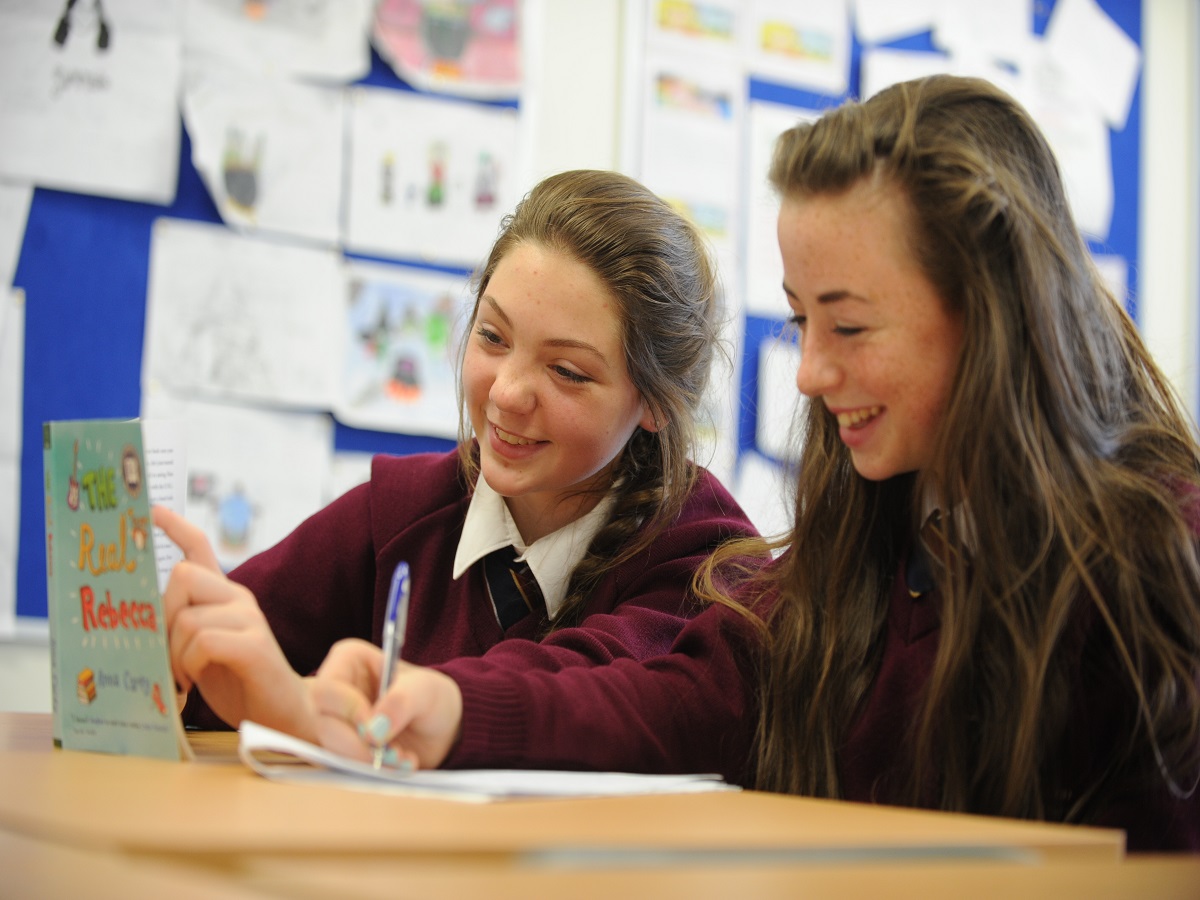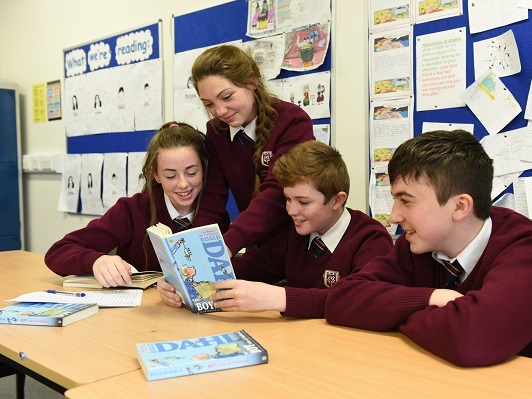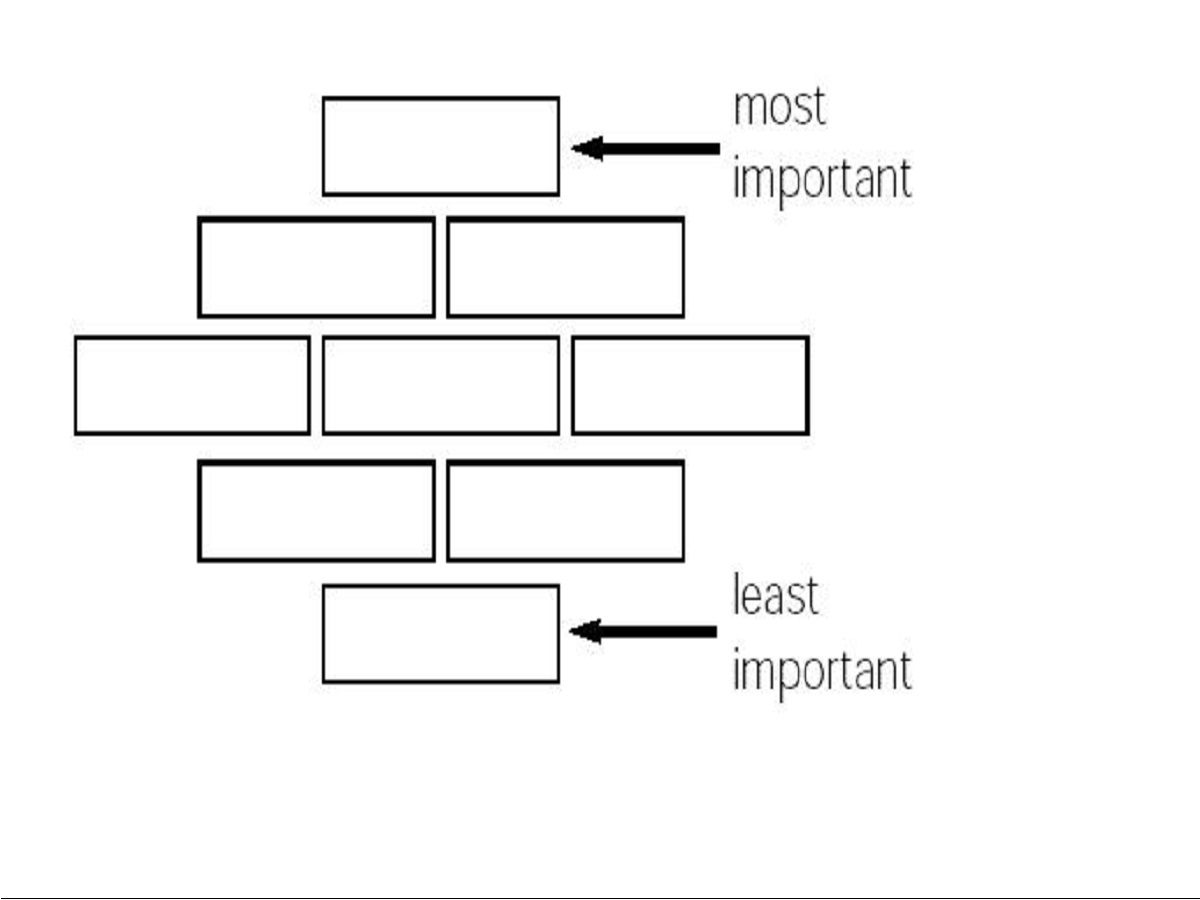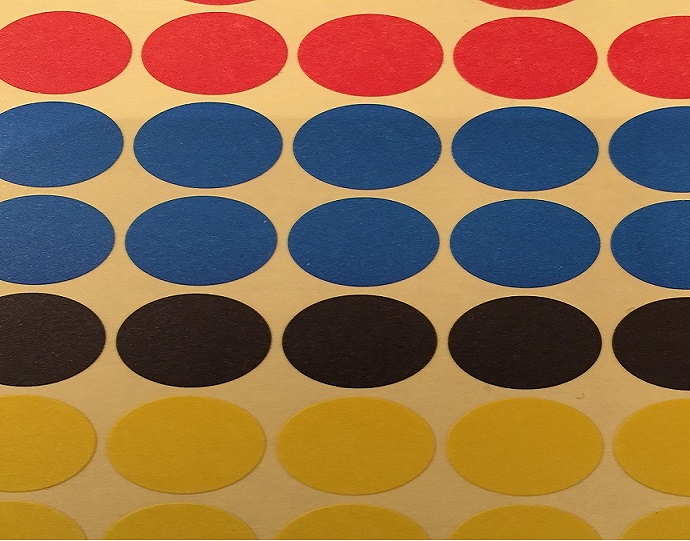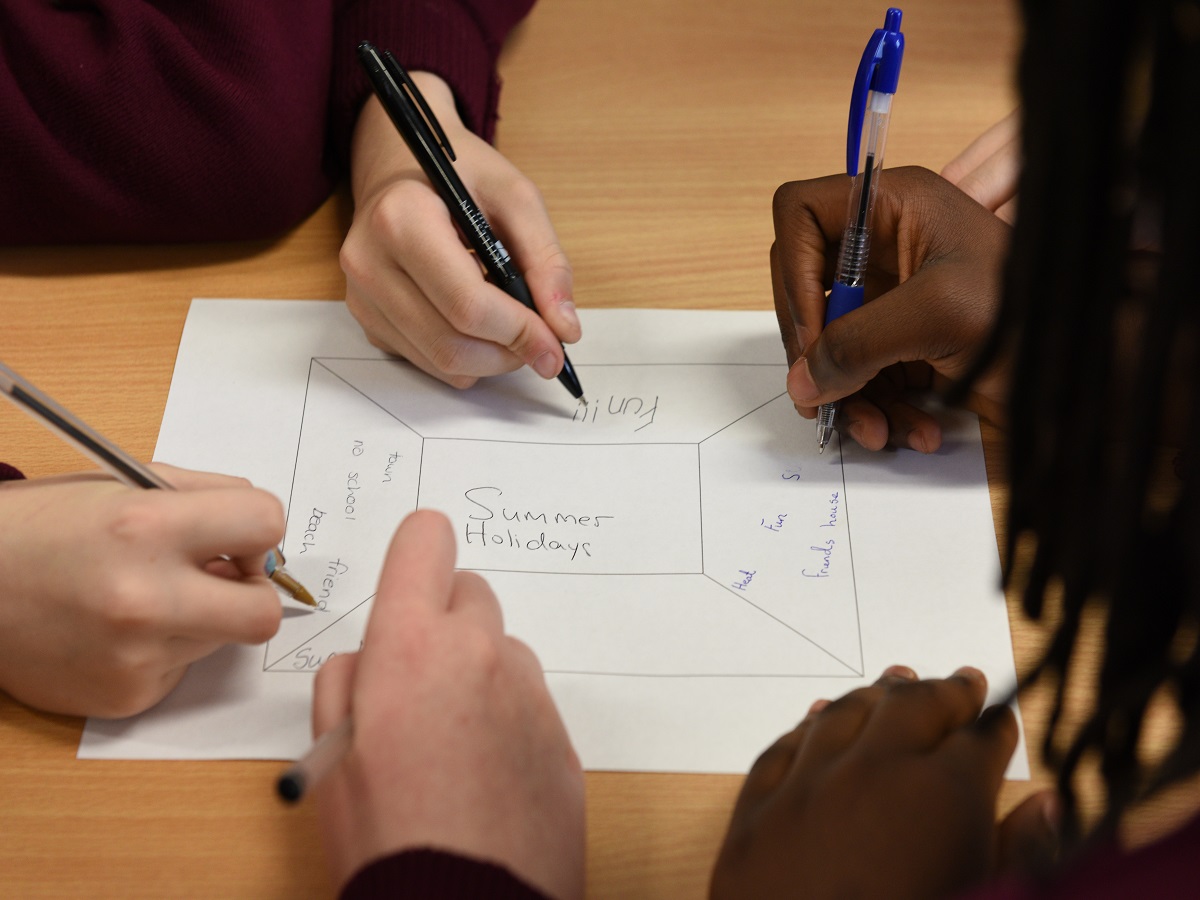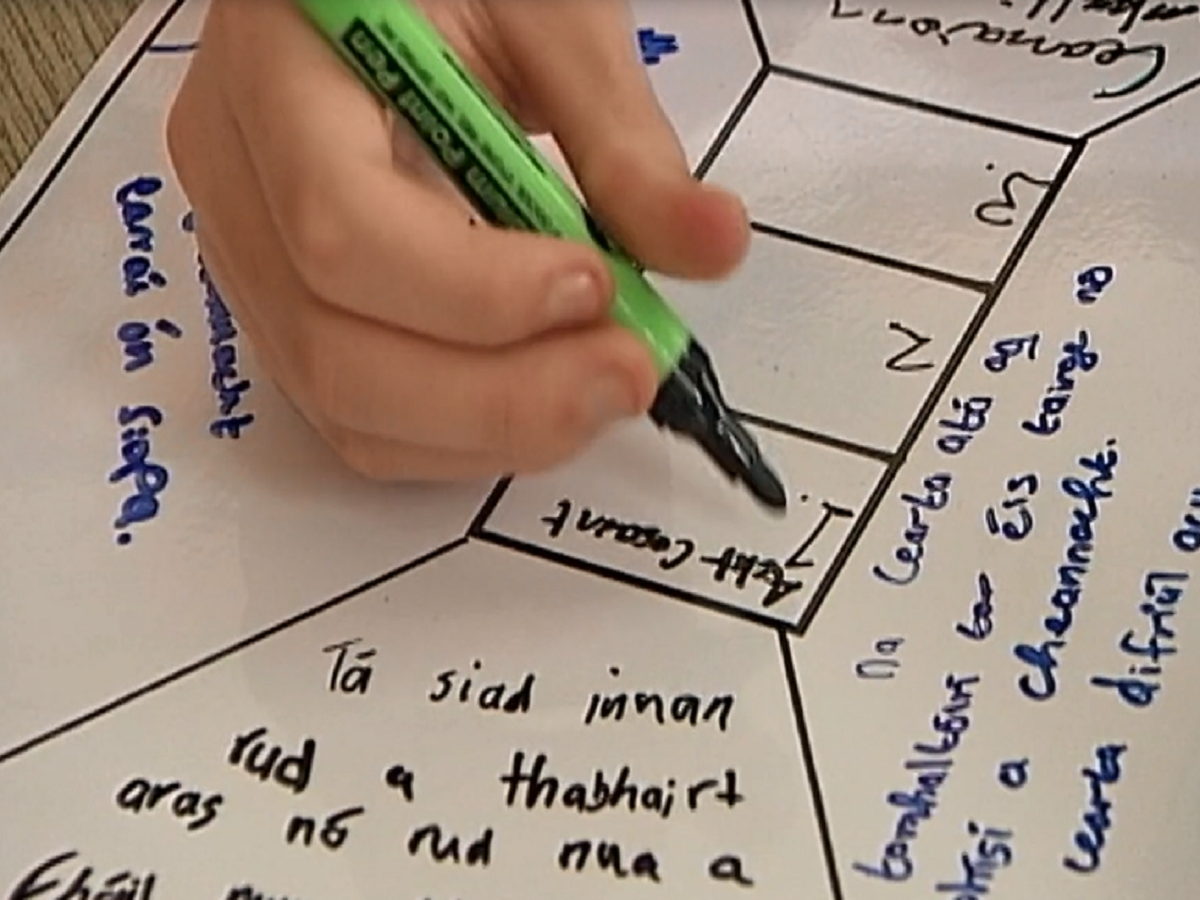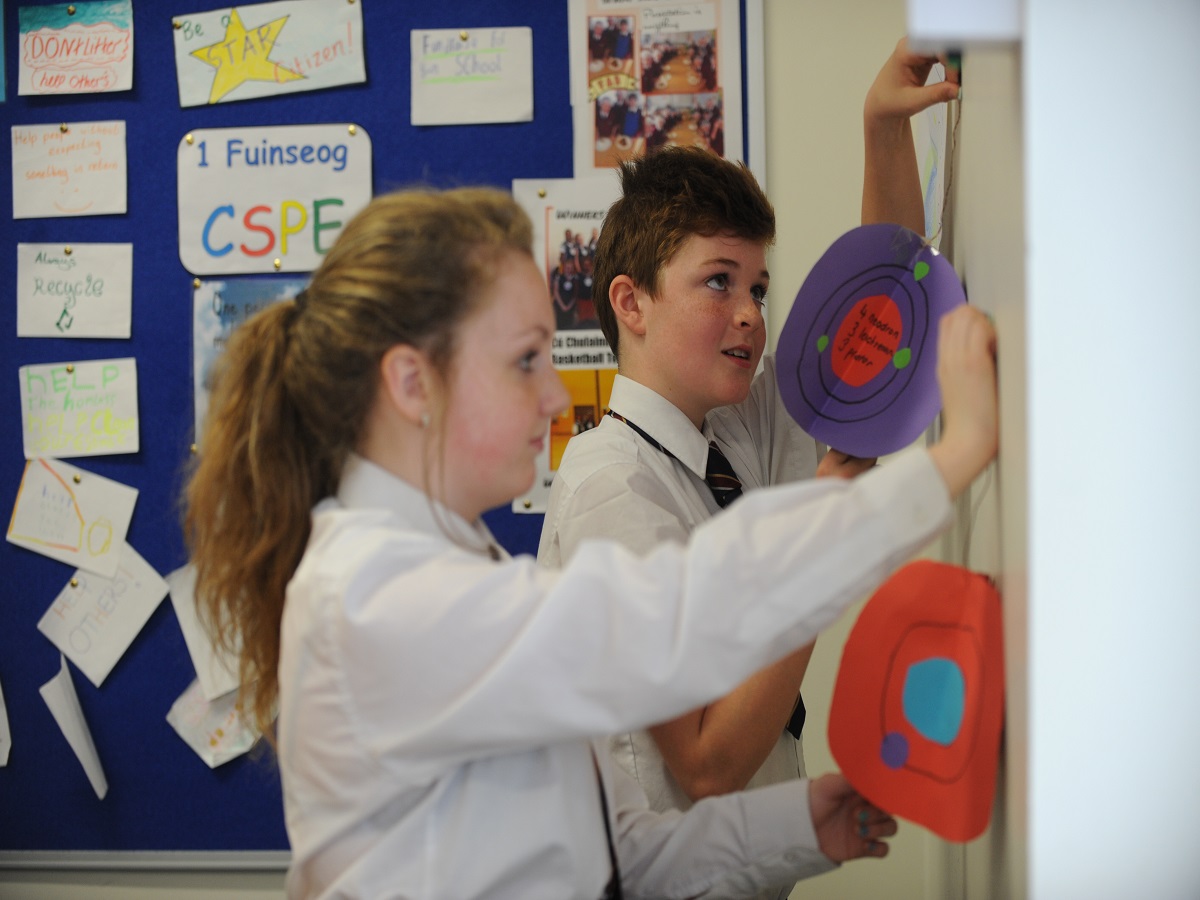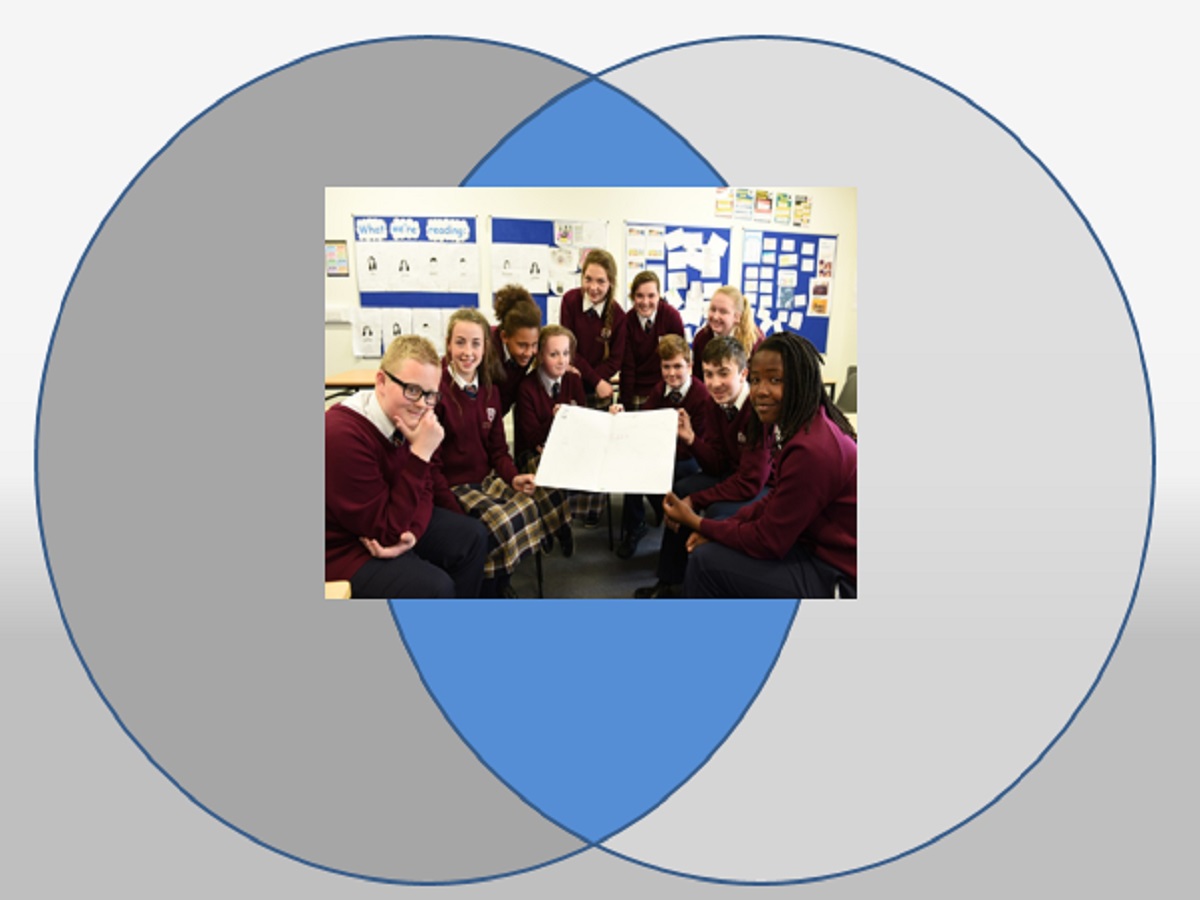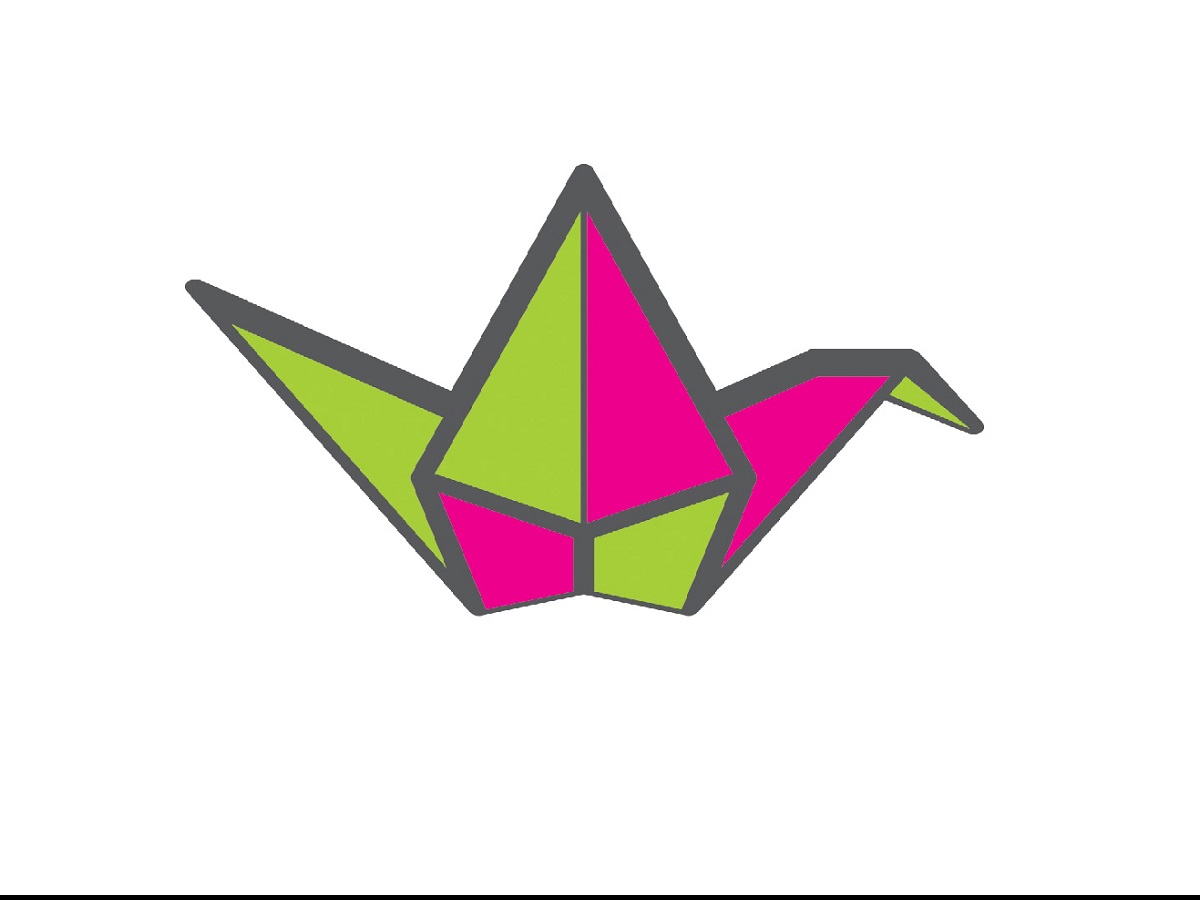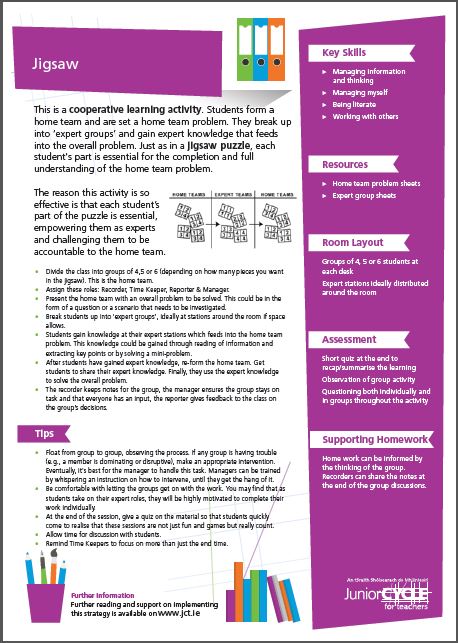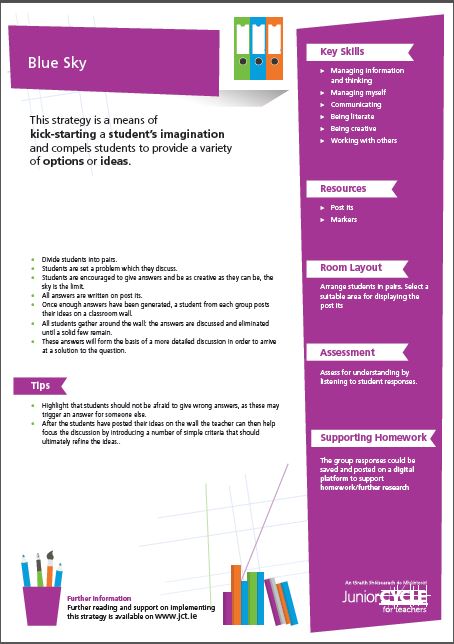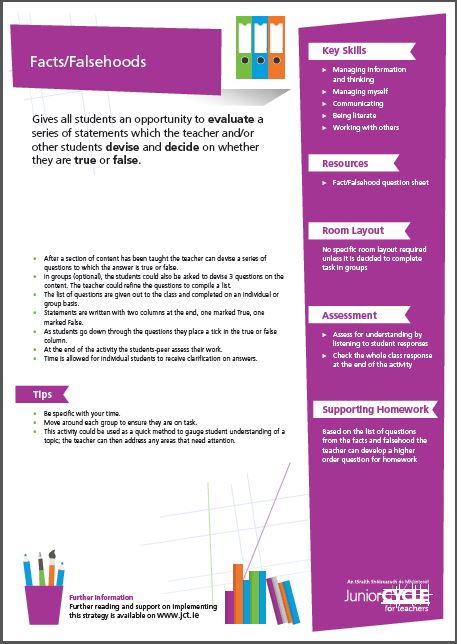-
MANAGING INFORMATION & THINKING
-
WORKING WITH OTHERS
-
COMMUNICATING
-
MANAGING MYSELF
-
BEING LITERATE
-
STAYING WELL
-
BEING NUMERATE
-
BEING CREATIVE
-
ALL STRATEGIES
Visit our YouTube Strategies channel:
Strategies to Activate the Key Skills:
WORKING WITH OTHERS
This is a cooperative learning activity. Students form a home team and are set a home team problem. They break up into "expert groups" and gain expert knowledge that feeds into the overall problem. Just as in a jigsaw puzzle, each student's part is essential for the completion and full understanding of the home team problem.
This strategy allows students to demonstrate
an understanding of relationships between
things and helps them clarify concepts.
Used collaboratively, students develop
communication skills and can deepen their
understanding of the topic in hand.
In this strategy students work together through
group vote to make informed decisions, to
prioritise and reach consensus. It could be used in
a Tutor Class, Year Group or Student Council to
come to a democratic decision.
Dotmocracy gives every student an equal chance
to have their opinion recorded even in the largest
of groups.
This strategy involves students interpreting, summarising, comparing and contrasting information using a different form of representation, generating new information and knowledge by adapting, designing and representing information digitally.
This strategy gives students a structure to
summarise and represent visually what they have
learned. It improves long-term memory of factual
information.
After teaching a topic coggle could be used to
summarise, organise and visualise the topic. It
could also be used as a brainstorming exercise to
summarise prior knowledge at the beginning of
a topic.
Provides all students with an opportunity to
engage in thinking at the evaluation level of
Bloom's taxonomy.
A Ranking Ladder requires students to place items
on rungs of a ladder in order from least to most
important, as a group activity it allows students to
be challenged as to why they rank one item above
or below another.
Using Skype in the classroom is a way for teachers
to introduce the world beyond the classroom
walls to their students. It creates a global
community of learners.
It can develop critical thinking, geography skills,
listening and speaking skills. It can be both
teacher and student-led. It encourages
collaboration, communication and it a useful tool
for research.
This strategy encourages students to gather information relevant to subject or topic in question. It is particularly relevant to the key skill managing information and thinking. The students learn to design quality questions and subsequently analyse the results in order to come to valid conclusions.
This strategy allows students to graphically display the similarities and differences between two items or themes. It works very well with groups allowing oral processing of learning. A very effective strategy for comparing and contrasting.
WORKING WITH OTHERS
JIGSAW Strategy more_vert
This is a cooperative learning activity. Students form a home team and are set a home team problem. They break up into "expert groups" and gain expert knowledge that feeds into the overall problem. Just as in a jigsaw puzzle, each student's part is essential for the completion and full understanding of the home team problem.
Classification more_vert
This strategy allows students to demonstrate
an understanding of relationships between
things and helps them clarify concepts.
Used collaboratively, students develop
communication skills and can deepen their
understanding of the topic in hand.
Dotmocracy more_vert
In this strategy students work together through
group vote to make informed decisions, to
prioritise and reach consensus. It could be used in
a Tutor Class, Year Group or Student Council to
come to a democratic decision.
Dotmocracy gives every student an equal chance
to have their opinion recorded even in the largest
of groups.
Through the Lens more_vert
This strategy involves students interpreting, summarising, comparing and contrasting information using a different form of representation, generating new information and knowledge by adapting, designing and representing information digitally.
Mindmap more_vert
This strategy gives students a structure to
summarise and represent visually what they have
learned. It improves long-term memory of factual
information.
After teaching a topic coggle could be used to
summarise, organise and visualise the topic. It
could also be used as a brainstorming exercise to
summarise prior knowledge at the beginning of
a topic.
Ranking Ladder more_vert
Provides all students with an opportunity to
engage in thinking at the evaluation level of
Bloom's taxonomy.
A Ranking Ladder requires students to place items
on rungs of a ladder in order from least to most
important, as a group activity it allows students to
be challenged as to why they rank one item above
or below another.
Skype more_vert
Using Skype in the classroom is a way for teachers
to introduce the world beyond the classroom
walls to their students. It creates a global
community of learners.
It can develop critical thinking, geography skills,
listening and speaking skills. It can be both
teacher and student-led. It encourages
collaboration, communication and it a useful tool
for research.
Survey more_vert
This strategy encourages students to gather information relevant to subject or topic in question. It is particularly relevant to the key skill managing information and thinking. The students learn to design quality questions and subsequently analyse the results in order to come to valid conclusions.
Venn Diagram more_vert
This strategy allows students to graphically display the similarities and differences between two items or themes. It works very well with groups allowing oral processing of learning. A very effective strategy for comparing and contrasting.



